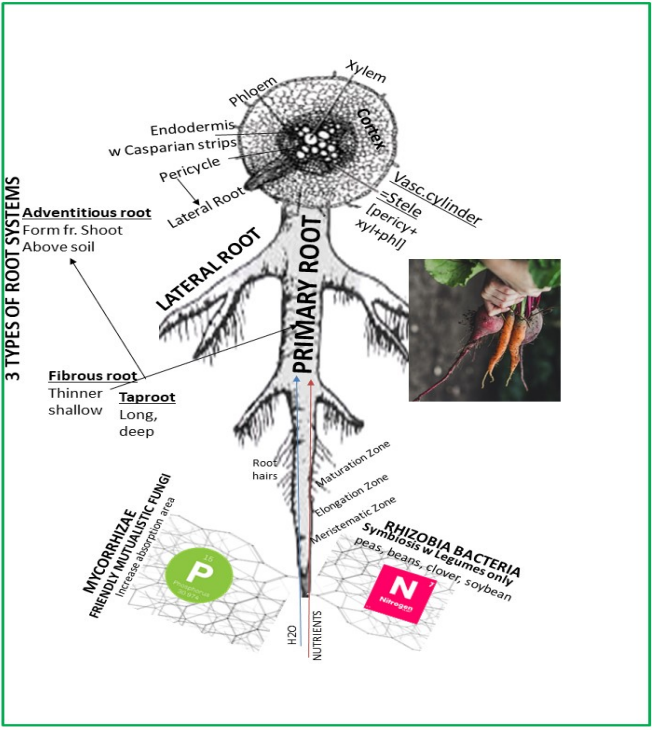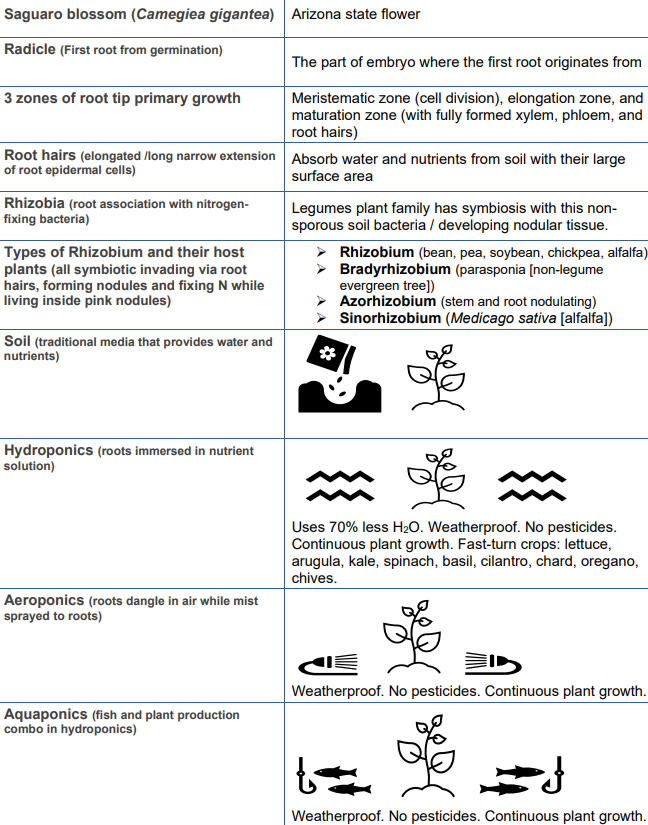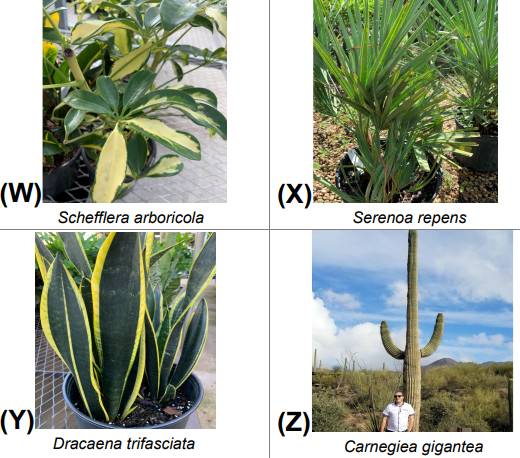1.3: Sistema Raíz
( \newcommand{\kernel}{\mathrm{null}\,}\)

Debido a que son clandestinas, las raíces no necesariamente obtienen tanto aprecio. La raíz es la parte subterránea del cuerpo de la planta que proporciona anclaje y absorción de agua y nutrientes minerales. Las raíces se originan a partir de la parte “radícula” de un embrión en la semilla. La epidermis es la capa más externa de la raíz, a la que le sigue la corteza para el almacenamiento y la endodermis. Debajo de la endodermis, la siguiente capa es el periciclo, que produce raíces laterales. La siguiente capa es el tejido vascular, que incluye el xilema y el floema como partes más internas del sistema radicular. Las tres regiones de la punta de la raíz son la región meristemática, la región de elongación y la región de maduración. La región de maduración está marcada con pelos radiculares, mientras que la región meristemática está protegida por un casquete radicular.
Finalmente, las puntas de las raíces crecen continuamente y empujan a través del suelo durante toda la vida Vamos a llegar a la raíz del sistema radicular de la planta.
- SLO 03.01: Aplicar las mejores prácticas para el aprendizaje del sistema raíz
- SLO 03.02: Dibujar y etiquetar tres principales sistemas radiculares de Angiospermas
- SLO 03.03: Comparar las raíces de monocotiledóneas y dicotiledóneas
- SLO 03.04: Explicar las diferencias entre vías apoplásicas y simplásicas
- SLO 03.05: Identificar especies de plantas dadas con sus nombres científicos en función de sus características clave
- SLO 03.06: Explica dónde se originan las raíces laterales
- SLO 03.07: Explicar cómo funciona la rizobia con plantas selectas para proporcionar nitrógeno


- Evaluación 03.3.1: Proporcionar ejemplos específicos del mejor método de crecimiento de plantas en Marte
- Evaluación 03.3.2: VERDADERO o FALSO— ¿La hidroponía aumenta el rendimiento del cultivo 5 veces?
- Evaluación 03.3.3: ¿Qué método de crecimiento vegetal es más sustentable?
- Evaluación 03.3.4: Exponer las diferencias entre suelo e hidroponía.

- Aunque esto aún se desconoce y se está investigando, esto puede suceder en un futuro cercano
- TRUE
- El método de cultivo que podría utilizar más fuentes renovables junto con altos rendimientos y amigable con el medio ambiente
- Con la hidroponía, los cultivadores pueden ahorrar agua así como controlar todo. Por otro lado, el suelo es muy importante y tiene mucho menos costos iniciales


